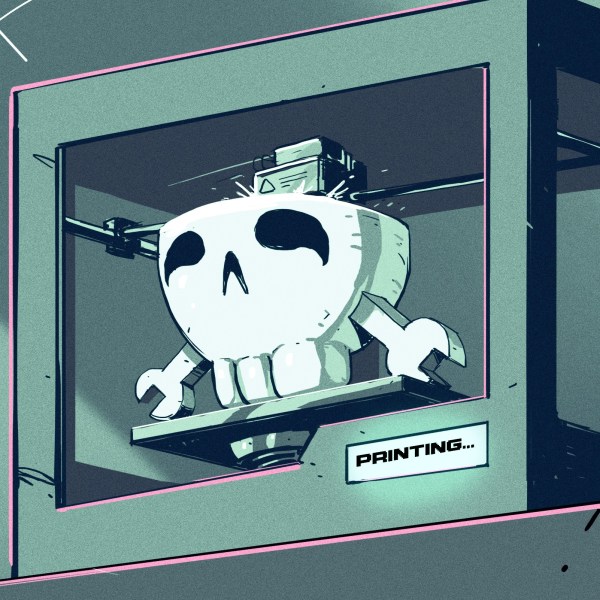It could be argued that erasable programmable ROMs (EPROMs) with their quaint UV-transparent windows are firmly obsolete today in an era of various flavors of EEPROMs. Yet many of these EPROMs are still around, and people want to program them. Unfortunately, the earliest EPROMs were made during a time when JEDEC standardization hadn’t taken root yet, leading to unique pinouts, programming voltages, and programming sequences, as [Anders Nielsen] explains in a recent video.
[Anders]’s Relatively Universal-ROM-Programmer project recently gained the ability to program even the oldest types of EPROMs, something which required modifying the hardware design to accommodate EPROMs like Ti’s TMS2716 and the similar-but-completely-different TMS2516. Although not the hardest thing to support – requiring just a diode and resistor added to the BOM along with a firmware update – it’s just one of those pre-standardization traps.
As [Anders] put it, it’s sometimes good to be unencumbered by the burden of future knowledge. Who would have willingly subjected themselves to the chaos of incompatible pinouts, voltages, etc., if they had known beforehand that in a few years EEPROMs and JEDEC standardization would make life so much easier? Maybe that’s why messing with retro hardware like this is fun, as afterwards you can go back to the future.
















The 2716 and 2732 weren’t “early.” “Early” were the 1702A and the 2708. Both of those needed three different power supply voltages, and the voltages had to be brought up in the correct sequence, or the chip would be toast. Also, they were exceptionally slow to program — as in one or two seconds per memory address.
Most hobbyist prommers started with 2764 support, though, I vaguely remember.
By late 80s and early 90s it was the oldest standard type still in wide use.
My hobbyist programmer, from Ciarcia’s Circuit Cellar ca. 1986, does the 2716. Basically every 5V EPROM up to the 27512.
None of those multiple supply things though.
I think the TI 2716 is triple voltage, the TI 2516 was single. I recall that giving us some trouble when ordering chips. We always had to check that the 2Kx8 was a single supply type. I don’t recall having that issue with the 2732s and above.
My first programmer was a Willem EPROM programmer, used parallel port and any generic PSU, 25v was suggested for EPROM. It originally had support for 2732 and up. Looking at schematic, it was easy to mod it for 2708 and 16 and I did modify the board for it.
It lasted some years before I had to retire it because parallel port was becoming obsolete and I didn’t want to keep 2 PCs: modern one for gaming and old one just for EPROM.
No offense, but a Willem was more of a high-end prommer, I would say.
Not exactly what the average hobbyist had at hand until years later.
Way back in the 90s, EPROM programming was most costly, I think.
It was a period of time in which IBM PCs had dominated and in which commercial programmers were expensive.
Such as Willem or Galep.
In the 80s, people still had home computers at hand
which could use cheaply made prommers stuck into expansion port.
The problem with 2716/2732 perhaps was that they had used 25v (or 24v in practice) and had a slightly different pinout.
That required use of mechanical adapters or very old prommer designs that still cared about 2716/2732 compatibility.
These ancient DELA programmers had it, for example.
https://retroport.de/hardware-d-e/
2764/27128/27256 use about same pinout and use 21v mostly.
(The CMOS variants don’t require it, I vaguely remember.)
There seem to be different 2732s, also.
https://www.fiero.nl/forum/Archives/Archive-000001/HTML/20090219-2-077851.html
Probably in the 90s, I remember finally having the money for a willem programmer in 2004. sivava.com/ sadly gone now. borrowed my dads creditcard (with permision) and altho expensive for a teenager like me, it was a recommended buy amoung the homebrew gameboy games scene. https://web.archive.org/web/20050305074939/http://www.sivava.com/ look at those prices and adapters, happiness.
GLAD I KEPT ALL MY OLD PROGRAMMERS.
That´s just one part of the puzzle: what about the accompanying software and OS ?
HAVE THAT TOO
Now you just need to find the Caps Lock button, and you’re in business!
Currently attempting to repair a BP-1200 programmer, so getting a kick out of this post.
Want some real fun, try burning PROMs (64×4, 256×4, 256×8, etc.). You burn one bit at a time. Some you burn the bit low, others burn the bit high. Some use 10v, some use 30v, Some one amount of time then X times. Another a different amount of time and Y times. While I still have my EPROM burner (and all the docs) and yes it can handle the 25, 21 and 12v program voltages. Unfortunately I don’t have a proper PROM burner. I’m hoping to build one for the chips I can still get (though technically I can work around that with EPROMS).
Oops, EPROM burner is from 1985.
I had programmers at work and (later) at home. The first programmer that I personally owned was an ISA card, which unfortunately, did not age well.
At work, I used a Data IO 29B, which could burn pretty much any sort of programmable device (at the time), ranging from EEPROMS, EPROMS, PROMS, and PLD/PLAs.
https://www.youtube.com/playlist?list=PL-_93BVApb5_9KfvnqAhu7b_L0KXhrMQ6